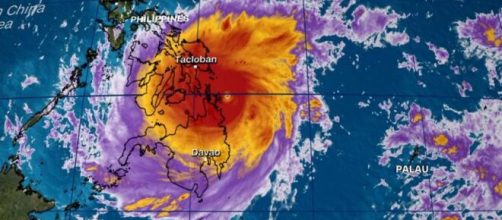A climatic disorder is set to hit the southern Philippines. It is Typhoon Rai, which is gathering momentum to become a super typhoon. With wind speeds of 130 mph, the storm targets the south and central portions of the country. The conditions in the region are favorable, with hot waters of the ocean coupled with low wind shear. This combination could strengthen it from a tropical storm to a high-end typhoon.
The Joint Typhoon Warning Center cautions that Typhoon Rai could reach 160 mph at landfall. That means Rai could get the label of a Category 5 hurricane or a super typhoon.
CNN says such a storm in the Philippines is known as Odette. The Philippine Atmospheric, Geophysical, and Astronomical Services Administration (PAGASA) monitor its progress.
The forecast is that there could be rapid deterioration of the situation with heavy rainfall. That could lead to difficulties in travel because of the condition of the roads and infrastructures. In November last year, Typhoon Goni struck the Philippines and left many dead.
Heavy rain from Typhoon Rai would mean flooding and landslides
The forecast is for more than 10 inches of rain across Mindanao and the Visayas. CNN adds that the rains would cause widespread flooding and landslides in mountainous terrain. There would be communication problems, and people might lose contact with others.
PAGASA has issued a warning for high-speed winds in southern portions of the Visayas and northern Mindanao. Moreover, the coastal areas could experience high storm surge and rough seas for shipping vessels.
Typhoons and storms are not new to the Philippines
Incidentally, the Philippines has experience in handling storms and typhoons. CNN mentions the last decade and the climatic disorders it had to cope with. In 2011, Tropical Storm Washi took nearly 1.000 lives. It did not become a typhoon, but the huge amounts of rainfall led to flash floods and landslides. It all happened at night while people slept.
Next year, it was the turn of Bopha. This was stronger than Washi, and it hit the region as a super typhoon.
Here also people died. Then in 2014, Hagupit struck, and two years later, Nockten. Obviously, those who live in the Philippines have gotten used to these disasters and survive. When power lines are uprooted, they have to embrace the darkness and a life minus the benefits of modern-day gadgets.
People from coastal areas evacuated due to the typhoon
According to Reuters, authorities in the central and southern Philippines arranged for the large-scale evacuation of people ahead of the landfall of a strong typhoon. It is the Typhoon Rai upgraded to a category four storm. The Philippines' weather bureau says the storm's wind speed is around 102.5 miles per hour, with strong gusts. Eastern Samar province was one of the hardest hit by super typhoon Haiyan in 2013.
Nearly 30,000 residents from this region have been evacuated over the last two days. Governor Ben Evardone confirmed this to a local media outlet and said – "We are getting pounded already by strong wind and rain." Some parts of the southern province are feeling the force of the storm. Residents are unable to go out because of the rain. Airlines have canceled dozens of flights, and transport authorities imposed bans on sea and land travel. That has left thousands of people stranded at ports. Incidentally, The Philippines is an archipelago of thousands of islands. Tropical storms are an annual feature, and they cause floods and landslides.


